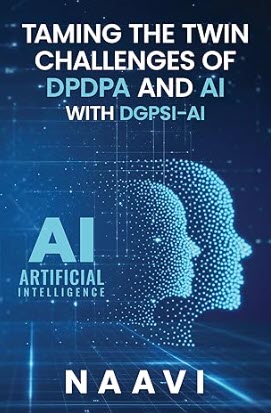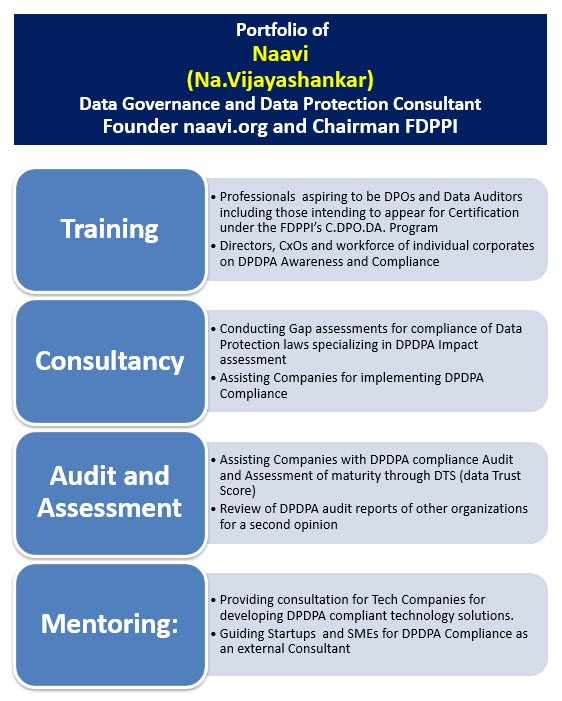The first three principles of DGPSI-AI namely the “Unknown Risk”, “Accountability” and “Explainability have been discussed in the previous posts.
Now we shall take up the principle of “Responsible AI Usage” which reflects the OECD principle of “Inclusive Growth” as well as the UNESCO principle of “necessity and proportionality”.
The “Responsible Use” means that the Data Fiduciary shall ensure that the use of AI shall not cause unnecessary harm to the data principles. Usage of AI should be more for the benefit of the Data Principles and not for profit making by the Data Fiduciary.
DGPSI -Full framework has a suggestion of implementation specifications namely the “Monetization Policy” (MIS 13) read with “Data Valuation Policy” (MIS 9). According to these, processing of personal data has to recognize the value of data before and after processing. The monetization policy has to explain what is being monetized and how.
The UNESCO principle of Responsibility states “
The use of AI systems shall be governed by the principle of ‘necessity and proportionality’. AI systems, in particular, should not be used for social scoring or mass surveillance purposes;”
Here the principle takes into account the sensitivity of the processed data. In the monetization policy of DGPSI-Full, processes such as social scoring or surveillance has compliance implications as well as a “Change of Value” of data during processing which should reflect the higher value of the sensitive personal data assuming that it was duly permitted by the data principle.
Hence the DGPSI-AI can absorb this UNESCO principle by stating
” The value addition to the AI processing shall be sufficient enough for the Data Fiduciary against a non AI process and shall be supported by appropriate consent.
Such a principle will also meet the ethical obligations such as that the primary benefit of the AI use should flow to the Data Principals.
This “Value addition Justification Principle” means that if the Data Fiduciary has means of achieving his data processing economically through a non-AI process, the need to absorb the “Unknown Risk” of the AI may be not necessary.
Use of AI should not be just for the sake of fashion and should be justified by an “AI use justification document”. This document should specify the purpose of use of the AI, and the value proposition which cannot be otherwise achieved at the same cost.
Such a document shall contain
-
Purpose of AI Use
-
Clear articulation of why AI is necessary for the specific data processing objective
-
Identification of the problem or opportunity that AI addresses
-
-
Value Proposition Analysis
-
Quantified benefits that AI processing provides over traditional methods
-
Cost-benefit analysis comparing AI versus non-AI approaches
-
Demonstration that equivalent value cannot be achieved at the same cost through conventional processing
-
-
Necessity Assessment
-
Evidence that the organization lacks viable non-AI alternatives for achieving the same processing objectives
-
Economic justification for absorbing the “Unknown Risk” inherent in AI systems
Organizations implementing this principle should:
-
Conduct Value Addition Assessments before implementing AI systems
-
Document Justifications for choosing AI over traditional processing methods
-
Regularly Review AI implementations to ensure continued justification
-
Monitor Impact on data principals to prevent unintended harm
-
Maintain Transparency about monetization and value creation from personal data processing
The Responsible AI Usage principle thus ensures that AI deployment serves genuine business and social needs rather than merely following technological trends, while maintaining focus on data principal welfare as the primary justification for processing personal data through potentially risky autonomous systems.
The “Responsibility” Principle at the developer’s end may have a slightly different perspective since it has to incorporate fairness in the development and testing process. Hence there could be some difference in the application of this principle between the Developer and the Deployer.
-
-
Naavi







